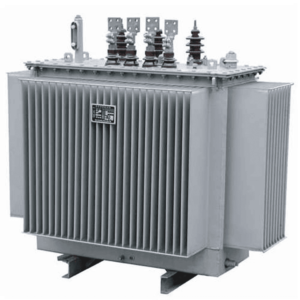Description
Reduced Line Losses:
Dry-type transformers can be installed close to their loads, such as within factories, schools, hospitals, and apartments. This proximity allows for shorter low-voltage lines, leading to a significant reduction in associated losses.
Increased Reserve Capacity:
When transformers are operated continuously at or near their rated loads, efficiency becomes critical. By selecting an 80°C temperature rise, these units can operate continuously at up to 20% beyond their rated load (if necessary, for instance, due to unforeseen expansions) at a much lower cost in terms of increased load loss, compared to installing an additional transformer.
Improved Reliability:
Transformers are highly reliable pieces of equipment. IEEE surveys indicate that the failure rates of modern cast resin dry-type transformers are comparable to conventional fluid-filled units of the same power and voltage classes. Moreover, in the event of an issue, dry-type transformers can be easily inspected, with minor repairs performed on-site.
Minimal Maintenance:
Dry-type transformers require minimal maintenance, needing only an annual inspection and dust cleaning to prevent airflow blockage. This maintenance simplicity significantly reduces operational costs. In contrast, liquid-cooled transformers require periodic inspections for leaks and rust, and their coolants must be continuously monitored and reconditioned when necessary.
Reduced Cost of Cabling:
Cast resin dry-type transformers do not require special fire safety measures, allowing them to be installed closer to the load. This results in lower costs for low-tension (LT) cabling.
Resistance to Humidity:
The resin coating on the coils and insulation components makes dry-type transformers resistant to moisture and polluted environments. This flexibility allows these units to be placed in locations that were previously unsuitable.
Environmentally Friendly:
Since no liquids are used in dry-type transformers, there is no risk of leaks, and no toxic or corrosive gases, including halogens, are released during accidents or fires. Additionally, at the end of their service life, the transformers can be easily dismantled, allowing for the recovery of materials like copper (or aluminum) conductors and steel cores. The increased use of dry-type transformers has also been driven by the avoidance of PCB hazards, which are present in many oil-filled units.
Improved Harmonic Loading Capability:
Transformers supplying loads with significant harmonic content often experience elevated hot-spot temperatures. While standard transformers reduce the base temperature to compensate, which increases their size, dry-type transformers retain a large reserve temperature capacity to handle these hot spots without shortening their lifespan.

![]](https://dadochaenterprises.com/wp-content/uploads/2024/10/unnamed-file.jpg)


Reviews
There are no reviews yet.